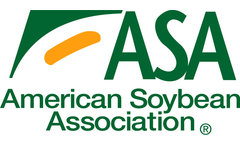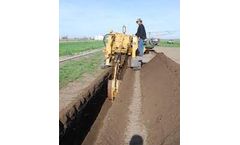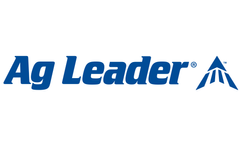Herbicide Use Articles & Analysis
30 articles found
As a result, these species fall under Pesticide Use Limitation Areas (PULA), which have more stringent herbicide requirements. ...
The Safety Factor in the Mechanical Harvesting Versus Chemical Herbicides Debate Then of course you have to ask yourself how safe it is to use any given chemical herbicide. ...
They also raise the concerns of the industry’s environmentally unsustainable methods of production. Did you know cotton uses more chemical pesticides than any other crop? Worldwide these result to 16% of all the insecticides and 7% of all herbicides used. ...
The reasons are many, including the absence of surface evaporation, as well as reduced weed growth, herbicide washout, maintenance, injury, and vandalism found with using conventional water application systems. ...
Weed management in corn and soybeans can be an extremely difficult problem to tackle and, if left unmanaged, can cause nearly a 52% corn yield loss and 49% yield loss in soybeans according to research conducted by the Weed Science Society of America and Kansas State University. For decades, herbicide use has proven to be effective, but resistant weeds have ...
Ones of the major problem for organically grown fruit producers is troublesome weed in any crop. The inability to use herbicides makes it necessary to look for other effective methods to weeds removing. ...
In the same way, it can also be used to map establishment of a spring crop in the late spring. Vegetable growers might find plant counts useful to evaluate how the planting of vegetables worked and use it throughout the season to make more precise yield estimations. ...
BySolvi AB
In 1996, the first genetically modified soybean was introduced to the U.S. market and since then this herbicide has been a common herbicide used on millions of acres for both corn and soybeans. With the ease of use and effectiveness, early users started to reduce the use rate of glyphosate in an effort to reduce ...
Herbicides, also known as weedkillers, are chemical substances used to control and kill unwanted plants (weeds), leaving the desired plants unharmed. While these products are very useful for farmers, they are not always safe. In fact, many herbicides that were in common use around the world a few years ago are ...
Abstract Imidazolinone herbicides are a family of five compounds including: Imazapyr, Imazapic, Imazethapyr, Imazamox, and Imazaquin. These herbicides are used to control a wide range of broadleaf weeds, by inhibiting the Acetohydroxy Acid Synthesis (AHAS), which is the first common enzyme in the biosynthesis of branched chain amino acids. ...
In response to the widespread occurrence of weed species resistant to glyphosate, biotechnology companies have developed crops resistant to the synthetic‐auxin herbicides dicamba or 2,4‐D, and once commercialized, adoption of these crops is likely to change herbicide‐use patterns. Despite current limited use, dicamba and 2,4‐D ...
The start of the spring pulse was determined using commercially available atrazine strips that detected atrazine when concentrations exceeded 3 ppb. ...
In Argentina, this number corresponds to 12 liters and, in many cases, it is “enhanced” with other herbicides such as graminicides or hormonal herbicides. This contrasts with the 3 liters/ ha used during 1996/97 before the introduction of the RR soy. ...
Herbicides are widely used pesticides that affect plants by changing their chemistry. In doing so, herbicides might also influence the quality of plants as food for herbivores. ...
Declining plant biodiversity in agroecosystems has often been attributed to escalating use of chemical herbicides, but other changes in farming systems, including the clearing of seminatural habitat fragments, confound the influence of herbicides. ...
However, aquatic weed management may pose a risk for aquatic species present in wetlands through the summer, such as the Oregon spotted frog (OSF, Rana pretiosa), a state endangered species in Washington. Acute toxicity of herbicides used to control aquatic weeds tends to be low, but the direct effects of herbicide tank mixes on OSFs have ...
IWM helps growers reduce the development of resistant weeds and mitigate the social, health, and environmental impacts of agriculture. Using competitive crops and cultivars are important components of IWM that are useful in both conventional and organic (and other low-input) farming systems. The success of barnyardgrass as a weed pest is attributable to many ...
Sulfonylurea herbicides are widely applied on the Canadian prairies to control weeds in a variety of crops. Several sulfonylurea herbicides are mobile in soil, and there is concern about their possible movement to ground water. This study was performed to assess the susceptibility of three sulfonylurea herbicides commonly used in ...
However, concerns about increased reliance on herbicides and demand for organically grown foods call for adoption of production practices that can reduce both tillage and herbicide use. This research study assessed the influence of planting and termination dates on mechanical cover crop control efficacy to limit tillage and ...
Glyphosate-resistant (GR) corn may be a major component of new cropping systems to optimize the use of limited irrigation water supply while sustaining production. ...













